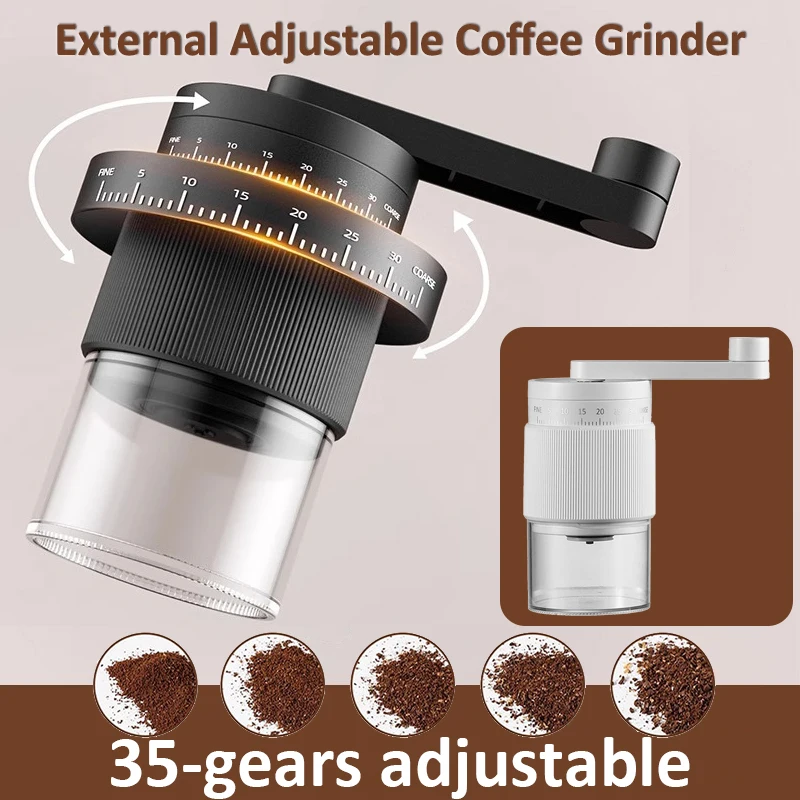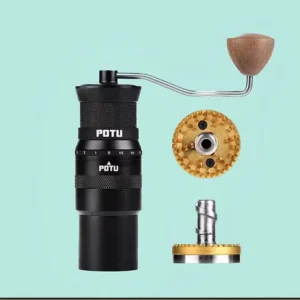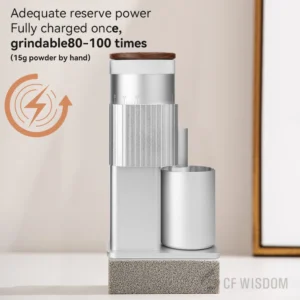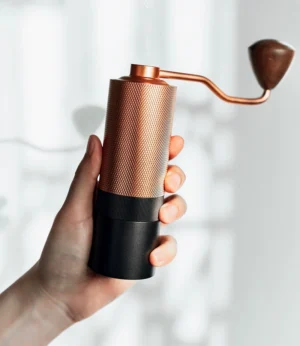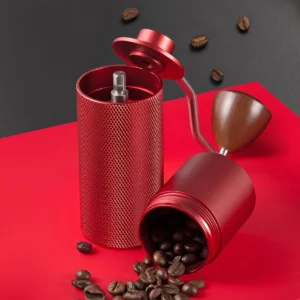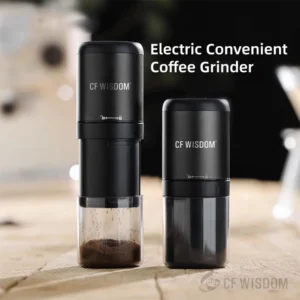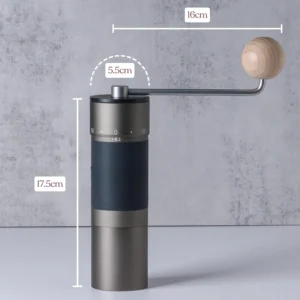The Art and Science Behind Espresso Grinding
The journey to the perfect espresso shot begins long before water touches coffee—it starts with the grind. When we discuss “espresso grind,” we’re typically referring to the fine consistency used in automatic pump-driven machines. In contrast, a “manual espresso grind” refers to the specific particle size needed for lever machines and portable manual devices like the Flair or Picopresso.
The difference between these two approaches isn’t just semantic—it’s fundamental to extraction quality. The grind size directly impacts how water flows through the coffee bed, determining pressure resistance, extraction time, and ultimately, the flavor compounds that end up in your cup.
Proper grinding affects virtually every aspect of espresso preparation: too fine a grind creates excessive resistance leading to bitter over-extraction or complete blockage; too coarse allows water to rush through, resulting in sour, under-extracted shots. Studies have shown that optimizing your grind can improve extraction efficiency by up to 25%, dramatically enhancing flavor clarity and balance.
The typical espresso grind falls somewhere between 200-400 microns in particle size, but precision grind settings for espresso often vary based on your specific equipment. Understanding these variations becomes particularly important when shifting between automatic and manual preparation methods, as each system applies pressure differently and therefore demands different grinding approaches.
The science behind these differences involves principles of fluid dynamics, pressure resistance, and extraction chemistry—but the art comes in adapting your grinding technique to match your specific equipment and desired flavor profile. The selection of espresso coffee hand grinders can significantly impact your ability to achieve consistent results across both standard and manual methods.
Understanding Standard Espresso Grind
The standard espresso grind for automatic machines has been developed and refined over decades to work optimally with the consistent 9-bar pressure these machines provide. This traditional approach creates a specific set of requirements that have become the benchmark for commercial and home espresso preparation.
A proper standard espresso grind typically exhibits these characteristics:
- Fineness: Similar to fine table salt or powdered sugar, but not quite as fine as flour
- Consistency: Uniform particle size with minimal variation
- Cohesion: Slight clumping when pressed between fingers, but breaks apart easily
- Flow Rate Control: Fine enough to create 25-30 second extraction times at 9 bars
The ideal particle size for automatic machines typically falls within 200-400 microns—fine enough to create proper resistance without choking the machine. This specific range works because automatic espresso machines deliver consistent, pump-generated pressure that can effectively push water through this density of coffee particles.
Visual assessment of your grind is valuable, but tactile evaluation can provide additional insights. When rubbed between your fingers, proper espresso grind should feel slightly gritty but not rough, somewhat like very fine sand. The espresso grind settings for the perfect shot often require multiple adjustments to achieve this precise texture.
The standard espresso grind is typically calibrated to work with commercial portafilters, 58mm baskets, and the standard parameters of 18-20g doses. This standardization allows baristas to create a consistent product across different settings and equipment types—a key advantage of the automatic approach.
When examining visual references of proper grind size, detailed espresso grind size charts can help you recognize whether your grind falls within the appropriate range for standard machines, providing a helpful benchmark for your own adjustments.
Manual Espresso Makers: Different Mechanics, Different Demands
Manual espresso makers operate on fundamentally different principles than their automatic counterparts, creating unique grinding requirements. These devices rely on human power rather than electric pumps to generate pressure, resulting in different extraction dynamics.
Lever Machines
Traditional lever espresso machines use spring tension or direct human force to generate pressure. Pre-infusion happens naturally as the lever is pulled, allowing water to saturate the coffee before full pressure is applied. This gradual pressure build-up often requires a slightly different grind profile than standard automatic machines.
Portable Manual Devices
Modern portable manual espresso makers like the Flair, Picopresso, and Cafelat Robot have gained popularity for their simplicity and control. These devices feature direct hand pressure application, allowing users to adjust pressure in real-time throughout extraction. This flexibility means the grind requirements might differ from automatic machines—sometimes requiring finer grinding to achieve adequate resistance.
Pressure and Flow Dynamics
Manual devices typically operate within similar pressure ranges as automatic machines (6-9 bars), but the pressure profile is fundamentally different. Rather than the immediate and consistent pressure of a pump, manual devices often feature:
- Gradual pressure ramp-up
- Variable pressure throughout extraction
- User-controlled flow rate
- Extended pre-infusion capability
These mechanical differences create specific demands on your grinding approach. The manual espresso grinder selection becomes particularly important, as these devices need to produce highly consistent particles to work effectively with the variable pressure application of manual brewing.
The interaction between grind size and pressure application becomes more direct with manual devices—you can feel resistance through the lever or press, allowing for immediate feedback and adjustment during extraction. This tactile connection makes grinding precision even more critical, as small variations can dramatically affect the pressure required to achieve proper flow.
Manual Espresso Grind: Adapting to Human-Powered Extraction
When grinding for manual espresso, the coffee bed becomes an extension of your pressure control system. While standard espresso grind serves as a starting point, several adaptations may be necessary for optimal manual extraction.
General Characteristics
Manual espresso grinding typically requires:
- Exceptional particle consistency (even more critical than for automatic machines)
- Often slightly finer grind than standard (device-dependent)
- Careful attention to distribution in the basket
- Adaptation to specific device design
The relationship between grind and extraction becomes more nuanced with manual devices. Since you control the pressure directly, you can compensate for grind imperfections to some degree, but consistency remains paramount for reproducible results.
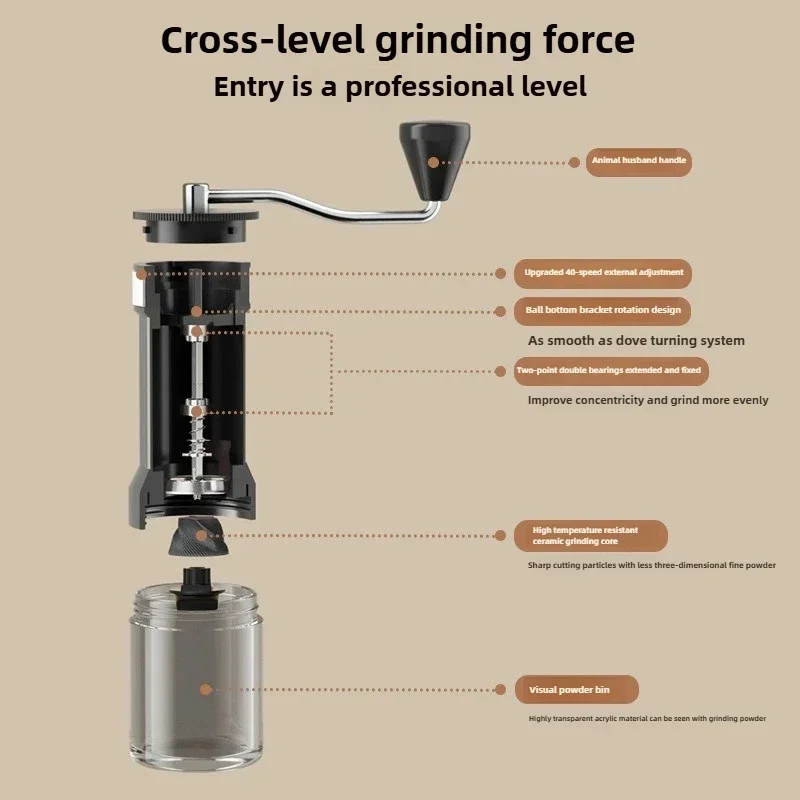
Device-Specific Requirements
Lever Machines:
Traditional spring lever machines often work best with slightly coarser grinds than pump machines due to their natural pre-infusion and declining pressure profile. This helps prevent choking during the initial pressure ramp. Direct-lever machines without springs may require finer grinding to create adequate resistance.
Flair and Similar Devices:
These modern manual presses often require exceptionally fine and consistent grinding due to their smaller basket diameters and direct pressure application. The precision required makes understanding manual and automatic espresso grinder settings particularly important.
Picopresso:
With its smaller basket size and efficient pressure design, the Picopresso typically requires a very fine grind—sometimes even finer than standard espresso—to achieve proper extraction resistance.
Technique Considerations
With manual devices, your technique directly influences extraction pressure, requiring grind adaptation:
- Faster pressure application generally requires finer grinding
- Extended pre-infusion works better with slightly coarser grinding
- Variable pressure profiles during extraction can rescue slightly imperfect grinds
- Puck preparation becomes even more critical with manual methods
The direct control of pressure in manual brewing creates both challenges and opportunities. While it demands greater attention to grinding precision, it also allows for creative pressure profiling that can elevate extraction quality beyond what’s possible with automatic machines.
Direct Comparison: Standard vs. Manual Espresso Grind
When comparing standard and manual espresso grinding approaches, several key differences emerge that affect both preparation and results:
| Characteristic | Standard Espresso Grind | Manual Espresso Grind |
|---|---|---|
| Typical Fineness | Fine (200-400μm) | Very fine to fine (180-350μm, device-dependent) |
| Consistency Importance | High | Very high |
| Pressure Application | Consistent, machine-controlled | Variable, user-controlled |
| Extraction Time | Typically 25-30 seconds | Variable (20-40 seconds) |
| User Skill Impact | Moderate | Significant |
| Adaptability | Limited by machine programming | Highly adaptable during extraction |
While both approaches aim for similar extraction targets (18-22% yield), the path to achieving optimal results differs significantly. Standard espresso grinding works within the constraints of automatic machine parameters, while manual grinding must account for the human element in pressure generation.
Manual espresso often requires greater grinding precision because slight variations in particle size have a more pronounced effect on extraction when pressure is directly applied by the user. The grinding process for manual espresso demands careful attention to detail and consistency.
In terms of forgiveness, automatic machines tend to be more forgiving of minor grind inconsistencies since they apply consistent pressure regardless of resistance (until the point of choking). Manual methods allow for adjustment during brewing but require greater skill to compensate for grinding imperfections.
Perhaps the most significant difference lies in adaptability: with manual methods, the grind becomes one variable in a dynamic system where pressure can be adjusted in real-time to optimize extraction. This creates opportunities for flavor development that go beyond what’s possible with standard methods, particularly when extracting complex single-origin coffees where pressure profiling can highlight specific flavor attributes.
Choosing the Right Grinder for Your Approach
Selecting the appropriate grinder is perhaps the most important equipment decision for either espresso approach. The right grinder should match your brewing method’s specific demands while providing the consistency and adjustment precision necessary for excellent extraction.
Essential Features for All Espresso Grinders
For both standard and manual espresso preparation, quality grinders should offer:
- Burr Design: Flat or conical burrs made from hardened steel or ceramic
- Adjustment Precision: Fine-grained control over grind size
- Consistency: Minimal particle size variation
- Low Retention: Minimal coffee trapped in the grinding chamber
- Durability: Robust construction that maintains alignment
Specialized Considerations for Manual Espresso
When selecting a grinder specifically for manual espresso devices, certain features become even more important:
- Micro-Adjustment Capability: Even finer control over tiny changes in grind size
- Alignment Quality: Superior burr alignment for exceptional consistency
- Zero Retention Design: Complete dosing accuracy for small, precise portafilters
- Repeatable Settings: Ability to return to previous successful settings
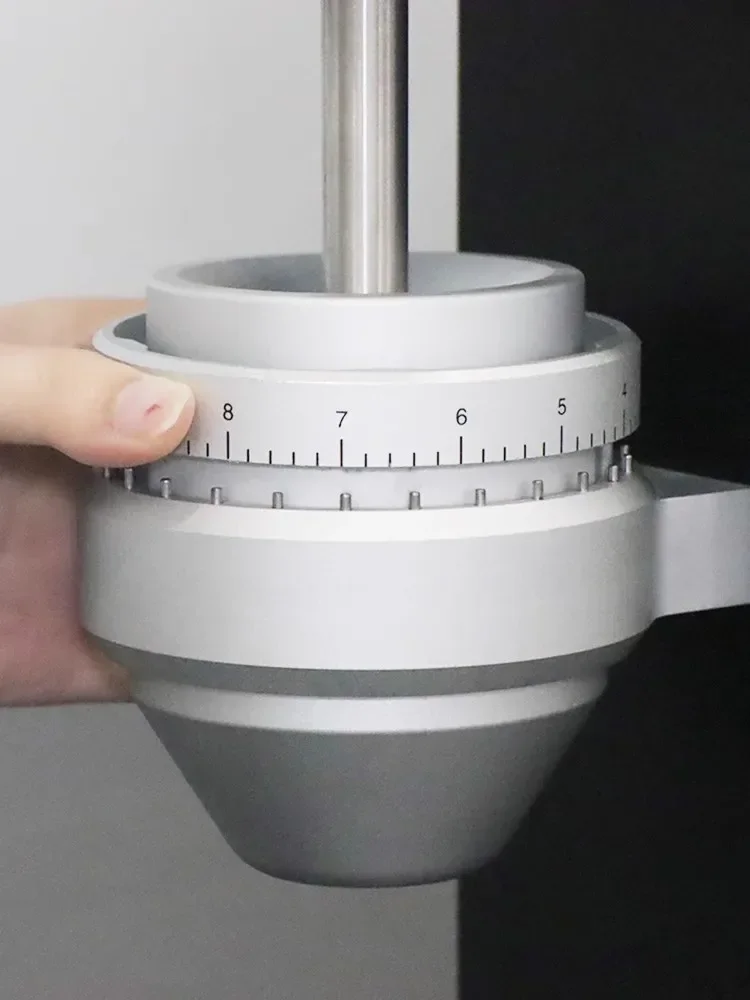
Many premium manual grinders excel for manual espresso preparation due to their exceptional adjustment precision and consistency. The fine adjustment hand grinder category offers particularly good options for manual espresso enthusiasts, providing the control necessary for these demanding brewing methods.
When evaluating grinders, consider both the initial grind quality and long-term consistency. Even premium grinders require periodic realignment and burr replacement to maintain optimal performance. This maintenance becomes particularly important for manual espresso preparation, where small changes in grind consistency can have pronounced effects on extraction quality.
The investment in a quality grinder often yields greater improvements in espresso quality than upgrading the brewing device itself—making this a priority purchase for serious enthusiasts of either brewing approach.
Fine Adjustment Hand Grinder, Precision Manual Grinder, Travel Coffee Grinder
Price range: $185.11 through $494.63 Select options This product has multiple variants. The options may be chosen on the product pageHand Burr Grinder, Hand Crank Coffee Grinder, Manual Espresso Grinder, Portable Coffee Grinder
Price range: $262.72 through $300.22 Select options This product has multiple variants. The options may be chosen on the product pageHand Burr Grinder, Manual Coffee Grinder Stainless Steel, Precision Manual Grinder
Price range: $183.64 through $187.52 Select options This product has multiple variants. The options may be chosen on the product pageManual Coffee Grinder Stainless Steel, Manual Espresso Grinder, Travel Coffee Grinder
Price range: $276.22 through $276.39 Select options This product has multiple variants. The options may be chosen on the product pageHand Crank Coffee Grinder, Manual Coffee Grinder for Espresso, Manual Coffee Grinder Stainless Steel
$349.15 Select options This product has multiple variants. The options may be chosen on the product page
Dialing In: Finding Your Perfect Grind Setting
Achieving the ideal grind for either standard or manual espresso requires a methodical approach to adjustment and evaluation. This process, known as “dialing in,” follows similar principles for both methods but with important distinctions.
The Universal Dialing In Process
- Start with a baseline setting – Begin slightly coarser than you think necessary
- Prepare and extract a shot – Use consistent parameters (dose, temperature)
- Evaluate the results – Note extraction time, flow characteristics, and taste
- Adjust incrementally – Make small changes based on your observations
- Repeat until optimal – Continue refining until extraction quality peaks
Standard Espresso Dialing In
For automatic machines, focus on achieving:
– 25-30 second extraction time
– Steady, viscous flow resembling warm honey
– Balanced flavor without sourness or excessive bitterness
– Proper pressure gauge reading (if equipped)
Manual Espresso Dialing In
For manual devices, the manual espresso grind setting guide suggests focusing on:
– Appropriate resistance during pressure application
– Smooth, controllable flow rate
– Extended pre-infusion capability (if desired)
– Ability to complete extraction without excessive force
Troubleshooting Common Issues
Too Fast Flow/Sour Taste:
– Grind finer in small increments
– Consider increasing dose slightly
– For manual devices, apply more pre-infusion
Too Slow Flow/Bitter Taste:
– Grind coarser in small increments
– Consider decreasing dose
– For manual devices, apply pressure more gradually
Channeling/Uneven Extraction:
– Improve distribution technique
– Consider using precision manual grinders for better consistency
– Ensure level tamping
– For manual devices, apply pressure more gradually
The dialing in process should be iterative and patient, especially when working with new beans or equipment. Document successful settings for different coffee origins and roast levels to build a personal reference guide for future brewing sessions.
Beyond the Grind: Complementary Factors for Perfect Extraction
While grind size and consistency are fundamental to espresso quality, they operate within a system where multiple variables interact to produce the final result. Understanding these complementary factors helps optimize extraction for both standard and manual methods.
Dose and Ratio
- Dose Precision: Weighing coffee to 0.1g accuracy ensures consistency
- Dose-to-Grind Relationship: Finer grinds typically work better with slightly lower doses
- Yield Ratio: The standard 1:2 ratio (e.g., 18g in, 36g out) may need adjustment based on grind size
- Manual Method Adaptation: Manual devices often perform well with slightly lower doses and finer grinding
Puck Preparation Techniques
- Distribution Methods: Even distribution becomes more critical with finer grinding
- Tamping Pressure: 30 pounds of pressure is standard, but consistency matters more than exact force
- Puck Evenness: Level pucks prevent channeling, especially important with manual pressure application
- Grooming Tools: Distribution tools help achieve even density throughout the puck
Temperature Management
- Brewing Temperature: Higher temperatures extract more readily from coarser grinds
- Temperature Stability: Consistent temperature throughout extraction promotes even results
- Temperature Surfing: For machines without PID controllers, timing shots based on boiler cycling
- Manual Device Considerations: Preheating becomes critical for thermal stability
Water Quality
- Mineral Content: Ideal water hardness extracts properly without scale buildup
- Filtration: Remove chlorine and contaminants that affect flavor
- Consistency: Using the same water source maintains calibration of your grind settings
The interplay between these variables creates a complex system where changing one parameter often requires adjusting others. For example, switching to a lighter roast might require both finer grinding and higher brewing temperature to achieve optimal extraction.
For manual methods, these relationships become even more dynamic, as you can adjust pressure in real-time to compensate for other variables. This flexibility is both the challenge and the joy of manual espresso preparation—allowing for creative control throughout the extraction process.
Can You Use the Same Grind for Both Methods?
Many coffee enthusiasts wonder if they can use identical grind settings for both automatic and manual espresso preparation. The answer depends on several factors including your specific equipment, technique, and flavor preferences.
When Crossover Might Work
In some situations, using the same grind for both methods is possible:
- When using manual devices that mimic automatic machine pressure profiles
- With medium-dark roasted beans that extract more readily
- If you adjust other parameters (dose, temperature, pressure application)
- When your grinder produces exceptionally consistent particle sizes
For example, a traditional spring lever machine might work well with the same grind used for an automatic machine since the spring mechanism creates a similar pressure curve. Similarly, some users find that certain manual devices like the Cafelat Robot can accommodate standard espresso grinds with minor technique adjustments.
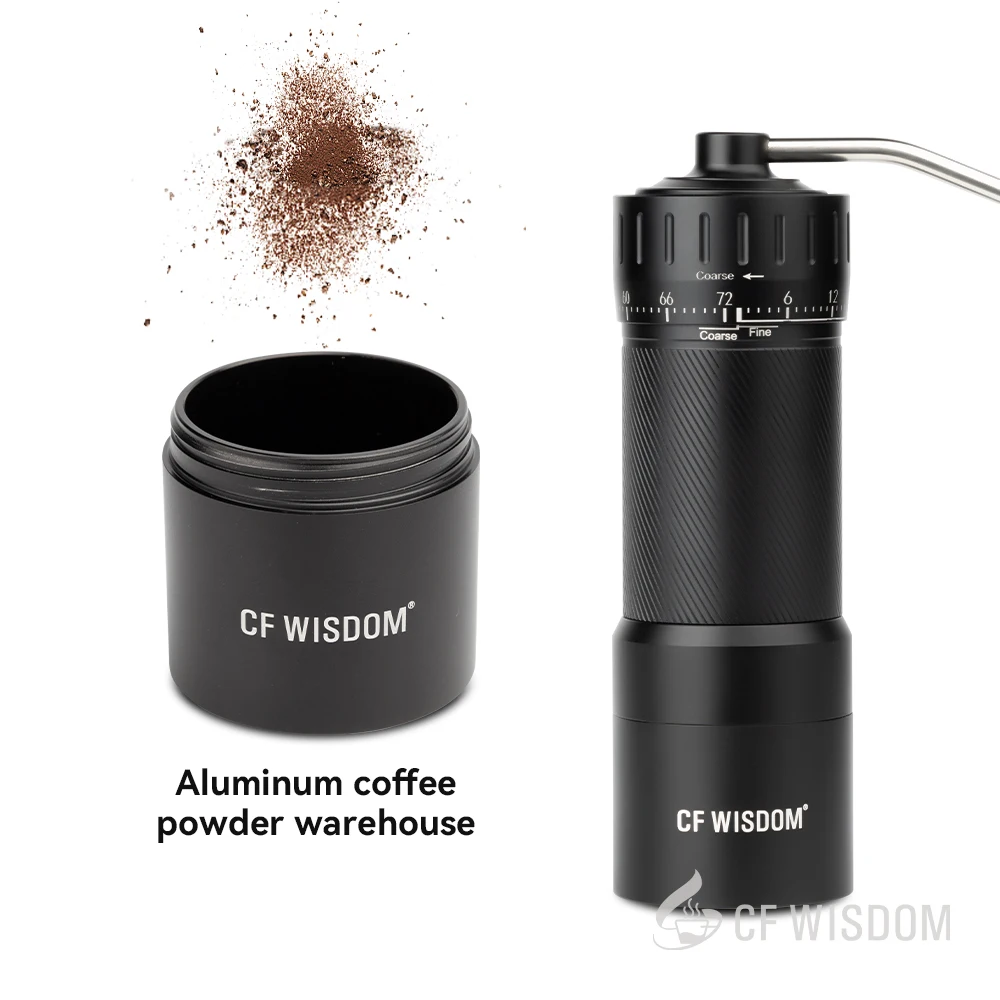
Understanding the Compromises
When using one grind setting for both methods, be aware of potential trade-offs:
- Extraction might not be fully optimized for either method
- You may need to adjust technique significantly to compensate
- Certain coffee varieties might perform better than others
- Results may be acceptable but not exceptional
Practical Approach for Limited Equipment
If you have only one grinder or limited adjustment capability:
- Find a middle ground setting that produces adequate results for both methods
- Adjust your technique rather than your grind (pressure, pre-infusion, ratio)
- Consider adapting dose slightly between methods (perhaps -1g for manual devices)
- Focus on beans that work well across methods (typically medium roasts)
While using the same grind for both methods can be convenient, dedicated enthusiasts will benefit from optimizing grind settings specifically for each brewing approach, especially when working with lighter roasts or more demanding manual devices like the Flair or Picopresso.
Is Manual Espresso Grinding More Challenging?
Many coffee enthusiasts wonder whether grinding for manual espresso presents a steeper learning curve than for automatic machines. The answer involves nuances about equipment, technique, and expectations.
The Challenge Factors
Manual espresso grinding does present unique challenges:
- Greater Sensitivity: Manual devices often respond more dramatically to small grind adjustments
- Technique Dependency: Your pressure application directly interacts with grind resistance
- Feedback Loop: Direct physical feedback requires interpretation and adjustment
- Device Variation: Different manual brewers have varying grind requirements
The perfect grind size for manual espresso often requires more experimentation than for automatic machines, where standardized parameters provide clearer starting points.
The Compensating Advantages
However, manual methods also offer unique advantages that can offset these challenges:
- Real-Time Adjustment: You can modify pressure during extraction to rescue imperfect grinds
- Direct Feedback: Immediate physical feedback helps develop intuition more quickly
- Visual Monitoring: Direct observation of extraction helps diagnose grind issues
- Creative Control: The ability to create pressure profiles that complement your specific grind
The Learning Progression
Most users find that manual espresso does involve a steeper initial learning curve but often leads to greater mastery and control. The key differences in the learning progression include:
- Automatic methods typically produce decent results more quickly
- Manual methods may produce inconsistent results initially but offer higher ceiling for exceptional shots
- Manual techniques build more transferable skills that improve all brewing methods
- The direct connection between action and result accelerates learning after the initial hurdle
Rather than being inherently more difficult, manual espresso grinding is perhaps better described as more engaging—requiring greater attention but also offering greater control and ultimately, more room for creative expression in your brewing approach.
Pro Tips: Maximizing Your Manual Espresso Experience
After mastering the basics, these advanced techniques can elevate your manual espresso preparation to exceptional levels:
Grind Just Before Brewing: Coffee begins oxidizing immediately after grinding, affecting flavor within minutes. For manual methods where every nuance matters, grind immediately before brewing.
Embrace Temperature Experimentation: Try decreasing brewing temperature by 2-3°F for very fine grinds to reduce bitterness, or increasing temperature for coarser grinds to enhance extraction.
Consider Bean Density: Dense, high-grown beans typically benefit from finer grinding than lower-grown varieties, even at similar roast levels.
Leverage Extended Pre-Infusion: Manual devices excel at long pre-infusion—try 15-30 seconds at low pressure before gradually increasing for light roasts with very fine grinds.
Master Pressure Profiling: Start with gentle pressure (2-3 bars) for the first 5-10 seconds, gradually increase to full pressure (6-9 bars), then taper down toward the end of extraction.
Adjust for Age: Freshen your grind setting as beans age—typically grinding finer as beans degas and lose volatiles.
Create Compound Adjustments: When switching beans, consider changing both grind and dose together rather than one variable at a time.
Maintain Your Equipment: Regular cleaning prevents oil buildup that affects grinding consistency. For manual grinders, periodic alignment checks maintain precision.
Document Success: Keep a simple log of successful settings for different beans to build a personal reference library of proven combinations.
Trust Your Taste: While extraction science provides guidelines, your personal preference remains the ultimate arbiter of successful grinding and preparation.
By combining technical precision with creative experimentation, the manual espresso experience offers a deeply rewarding pursuit of coffee perfection—one thoughtfully crafted grind at a time.

